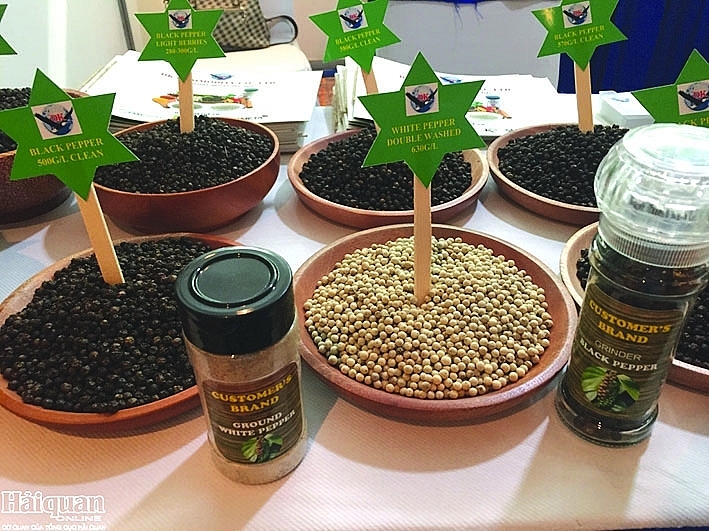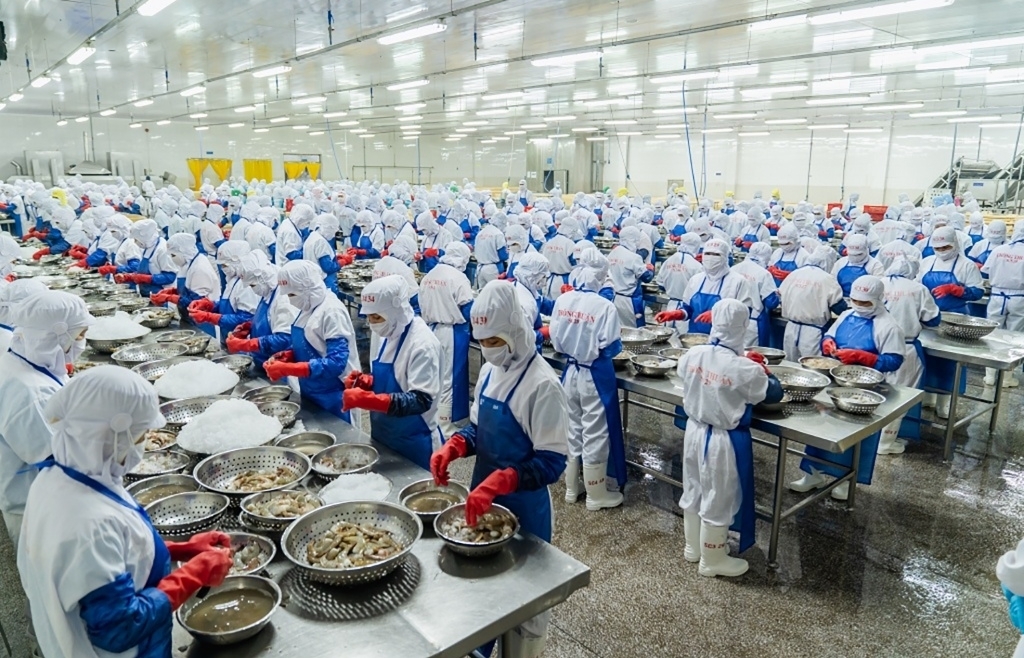Potential for exporting spices and flavorings
 |
| The global organic spices market was worth 17 billion euros in 2021 and is estimated to reach a (retail) sales value of nearly 20 billion euros by 2026. Illustration |
More and more demands
According to the Vietnam Trade Office in Belgium and the EU, Europe is one of the leading importing markets for spices and flavorings, accounting for about 1/4 of the world's total imports. In 2021, Asia was the leading importer of spices and herbs with 45% of the market share, followed by Europe (28%). Of these, more than 95% of imports from outside Europe came from developing countries.
| According to the Vietnam Trade Office in Belgium and the EU, the next decade is expected to be marked by impressive growth in organic spices and flavorings, in line with the fast-growing organic food trend. The global organic spices market was worth 17 billion euros in 2021 and is estimated to reach a (retail) sales value of nearly 20 billion euros by 2026. In Europe, the growth rate of organic spice consumption is predicted to impressively plummet in Sweden and the UK (more than 5.5% per year over the next 7 years). |
Notably, from 2019 to 2021, the European market has maintained import needs, especially from developing countries. Imports of spices and flavorings during this period increased at an annual rate of 9%, reaching 1.8 billion euros and accounting for 60% of European imports.
According to the Vietnam Trade Office in Belgium and the EU, due to the characteristics of the European market and the trade and processing industry, the main markets importing spices are forecast to remain the same growth in the coming years. Opportunities for your business's spices and flavorings will depend heavily on business supply capacity in terms of quantity, quality, price, and certification.
The European countries that offer the most opportunities are Germany, the UK, the Netherlands, and Spain. Based on import statistics, the spices and herbs with the best market share and effectiveness in the European market are ginger, turmeric, pepper, cinnamon, thyme, and nutmeg. “Growing demand for sustainably produced spices, new origins, and the use of spices and flavorings in international cuisine are leading trends opening up opportunities for exporters from developing countries. Conversely, growing buyer requirements and regulatory changes can pose a threat to suppliers from developing countries, especially new suppliers unfamiliar with the requirements. Spices are increasingly tested for allergens, toxicity, and authenticity, so it is important to keep up with these market dynamics to maintain our position as a competitive supplier to the European market", said the Vietnam Trade Office in Belgium and the EU.
Most of the mandatory requirements when importing flavors, spices (and food in general) are related to food safety. Food imported into the EU is subject to official food controls such as regular checks that can be carried out upon import (at the border gate) or later, once the food has been distributed in the EU, for example at the operator's premises. The control aims to check whether the product meets legal requirements. Non-compliance with European food law is reported through the Rapid Alert System for Food and Feed (RASFF). In particular, if imports of a certain product from a particular country consistently demonstrate non-compliance with European food law, the frequency of official checks at the border will increase.
Vietnam owns many strong products
It can be seen that there is room in importing markets for Vietnam. Many spice products have affirmed their position in the international market. According to the Ministry of Industry and Trade, for cinnamon alone, the cinnamon area in Vietnam reaches about 150,000 hectares, accounting for 17% of the global cinnamon area. Currently, Vietnam is the third largest producer and exporter of cinnamon in the world in terms of output, after Indonesia and China. Remarkably, anise is a native plant that can only planted in very few countries such as Vietnam and China. Items and products from cinnamon, anise, and medicinal plants are increasingly drawing attention and expanding export markets due to changes in consumer awareness, opinions, and tastes towards green lifestyles, clean, good for health, and helps increase immunity.
Currently, Vietnamese cinnamon and anise are strongly consumed in many regions of South Asia (such as India, and Bangladesh), the Middle East (UAE, Pakistan), East Asia (Japan, Taiwan - China, Korea), America, and countries of the European Union - EU. Thanks to growing needs for input materials in the food, cosmetics, and pharmaceutical industries... and many signed free trade agreements, Vietnamese cinnamon and anise products benefit more developing motivation and opportunities.
Related News
Latest News

VN's food processing industry struggles to improve quality and value chain integration
15:53 | 22/11/2024 Import-Export

Approach strategy of the seafood industry when implementing UKVFTA
09:26 | 22/11/2024 Import-Export

Mid-November: Vietnam's trade volume matches 2023 total, eyes record-breaking growth
09:25 | 22/11/2024 Import-Export

Vietnamese enterprises facing challenges from cross-border e-commerce platforms
14:32 | 21/11/2024 Import-Export
More News

Vietnam, Malaysia eye new milestone in trade ties
14:29 | 21/11/2024 Import-Export
Shrimp exports surge in 10 months, generating 3.2 billion USD
14:27 | 21/11/2024 Import-Export

Vietnam’s exports to the U.S. near US$100 billion milestone
09:46 | 21/11/2024 Import-Export

From the “abnormal” coffee price, worries about the new crop
09:46 | 21/11/2024 Import-Export

What obstacles limit the market share of Vietnamese goods in the UK?
14:49 | 20/11/2024 Import-Export

Why seafood exports to some Middle Eastern Countries are stalled
14:47 | 20/11/2024 Import-Export

Storm No. 3 destroys profits of many insurance companies
14:45 | 20/11/2024 Import-Export

Vietnam, Malaysia eye golden partnership opportunities in Halal industry
14:44 | 20/11/2024 Import-Export

Tra fish sector aiming for production, processing greening for sustainable development
14:41 | 20/11/2024 Import-Export
Your care

VN's food processing industry struggles to improve quality and value chain integration
15:53 | 22/11/2024 Import-Export

Approach strategy of the seafood industry when implementing UKVFTA
09:26 | 22/11/2024 Import-Export

Mid-November: Vietnam's trade volume matches 2023 total, eyes record-breaking growth
09:25 | 22/11/2024 Import-Export

Vietnamese enterprises facing challenges from cross-border e-commerce platforms
14:32 | 21/11/2024 Import-Export

Vietnam, Malaysia eye new milestone in trade ties
14:29 | 21/11/2024 Import-Export





